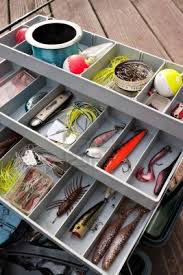
Fishing on a budget can be hard if you don’t know how to shop for the supplies wisely. I will tell you how to get some of the basic fishing equipment that is needed for bass fishing, all roughly around 100 dollars.
Basic Fishing Rod
You can get a basic rod/reel combo from your local retail store for about 30 to 40 dollars. As cheap as that sounds, when you’re on a budget; you get what you can afford. Sometimes an inexpensive rod/reel combo can be just as good as a 100 dollar combo but only if you shop smart.
Lures
As far as lures, you only a few good ones that can be purchase at your local retail store or fishing store. You only need the basic assortment that that would only total about 20 to 30 dollars. The lures you need:
Spinnerbaits – are the most productive lure in your arsenal of lures. Spinnerbaits may run from 2 to 4 dollars and come in various colors.
Worms– Plastic Worms are another great lure in your arsenal and only for 2 to 4 dollars and like the spinnerbaits can come in a various colors such as grape and black.
Crankbaits – this lure can come in a variety of colors and shapes which can intimidate beginner anglers. Just stick to colors that mimic river herrings such as purple/silver, green, white and green.
Topwaters- just get a few in naturals colors like green or gray and buy a few of these in different sizes.
Jigs – are great for bass in heavy cover. A Jig imitates a crawfish so the colors that should be used are natural colors such as brown, white, and black/blue.
Tackle
Hooks, Sinkers, swivels and line are considered tackle.
Hooks– it is always a good idea to have a assortment of hooks in a variety of sizes ranging from #2 to 4/0 sproat.
Sinkers come in all sorts of styles and sizes such as Sliding Bullet weights. it is a good
idea to buy a pack of 1/8 ounce, 1/4 ounce and 1/2 ounce weight along with a pack of Sliding bullet weights. Sliding Bullet weights are used in Texas and Carolina rigs
Swivels are used in a Carolina rig. Buy a pack of swivels and they will last for a while.
Line is used to connect your hook, sinkers and bait together to your fishing pole so it is important
to have a good line; a good size of line used to catch good sized fish is 8 pound mono. But if you are fishing in heavy cover, try 12 pound test.
Tackle box
All this stuff needs a place to be stored in a good tackle box. A small tackle is the suggested size that is recommended. They run about 3 to 10 dollars at the local retail store.
Have fun Fishing.
Information provided by Christian Erickson http://www.bassresource.com/beginner/budget_tackle
